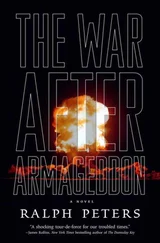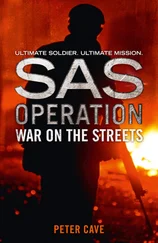“What about Scott?” Friedman said. “What role can he play now that the immediate threat to the summit has been eliminated?”
“Nothing’s changed, Mr. Friedman,” said Ellsworth. “The Russians still need all the help they can get. Scott is their backstop if the K-363 tries to break out of the Barents Sea—assuming he doesn’t find her first.”
“But now that the threat has diminished, won’t the Russians decide to recall Scott in the K-480? They may not want him looking over their shoulder, evaluating their capabilities in detail.”
“Yes, sir, that’s a definite possibility,” Ellsworth said. “But until they do, Scott, as you suggest, is in a position to provide us with the answers to questions we’ve been asking for years. For instance, how vulnerable are those Akulas to detection, and can they be knocked out by the new homing torpedoes the Russians have developed for use against us? We’ve heard they had problems with them being able to discriminate between U.S. and Russian decoys. We may never have a chance like this again.”
The Barents Sea graphic collapsed, and Ellsworth and Webster reappeared on the monitor.
Friedman beat a tattoo on the conference table with a gold pen. “Admiral Ellsworth, a moment ago you said that you wanted to know if a Russian Akula can be knocked out—sunk—by these new torpedoes the Russians have.”
“Yes, sir. I did.”
“I take it, then, you believe the Russians will sink the K-363, not capture her and arrest Litvanov and Zakayev.”
Ellsworth put his fine china coffee cup into its matching saucer and touched the comer of his mouth with a fingertip. “Capturing the K-363 is a tall order, Mr. Friedman. A nuclear sub’s endurance is limited only by the amount of food she can carry. Even if they find her, I don’t see how they can capture her or make the terrorists surrender. If they’re as dedicated to their cause as it appears they are, I believe the Russians will have no choice but to destroy that boat.” “They couldn’t drive her aground and board her?”
“Even if they trapped her in shallow water, which is not likely, they’d have to devise some method to blast their way inside. I don’t know that they could without killing everybody aboard and maybe the commandos who’d have to do it.”
“Admiral Webster?” Friedman said.
“I’m an Airedale, not a submariner. So I defer to Carter. However, I don’t think the Russians are inclined to take the terrorists prisoners, not after their attack on the concert hall in Moscow. Even if the Russians believed that they could learn something from them about future terrorist plans, I think they’ll decide to make an example of them and not give them an opportunity to spout their venom in a Moscow courtroom.”
Friedman said, “Admiral Ellsworth, if terrorists stole one of our subs, would we sink it?”
Ellsworth blanched. “Mr. Friedman that’s not something we expect to ever deal with.”
“I understand, but suppose you had to.”
Ellsworth laced his fingers on his desk and looked down at them; only the top of his head appeared in the monitor. At length ComSubLant raised his head and looked directly into the video camera. He said, “I’ll answer your question this way: Our submarine crews are trained never to surrender their ship. An American submarine crew, confronted with the imminent capture of their vessel by an enemy, are under strict orders to destroy it.”
“They have the means on board to do so?”
“Yes,” Ellsworth said grimly.
“Do Russian sub crews have a similar ability?”
“I imagine so.”
“Then it’s fair to say that the K-363 will either be destroyed by the Russians or the terrorists themselves.”
“Yes,” Ellsworth said emphatically.
“Thank you gentlemen,” Friedman said. “I won’t take any more of your time.”
The video screen went black.
Friedman indicated that his secretary and assistant should get a start on preparing conference summaries. The door clicked shut behind them and Friedman swiveled around in his chair to face Radford.
The national security advisor’s eyes flared like lasers. “Your thoughts, Karl?”
“We’re skating terribly close to the edge on this one, Paul,” said Radford. “The Russians will put up a hell of a fuss if they find out we’re a step ahead of them.”
“But they won’t find out,” Friedman said.
“They will if we deploy.”
“You have Scott. Use him.”
“And then what? What do we tell the Russians: ‘Oh, sorry, we meant to tell you what we were doing but plumb forgot to?’ I don’t think that will go over too well, Paul.” “What are they going to do? I’ll tell you: nothing. That’s right, nothing. We’ll have done them a favor and they won’t say a thing.”
Friedman and Radford remained silent for a time, assessing options, weighing possibilities. Both men knew that they could not ignore the consequences of any future operations they authorized, not when it involved the president of the United States.
Radford checked the time. “I’m to brief the President after lunch. Let’s see what you have.”
Radford pressed the remote video control. Again the screen went to blue, then to an image of the western coast of Norway recorded earlier by an SRO KH-13 reconnaissance satellite that had turned reality on its head: On the screen, Norway was magenta, the Norwegian Sea pea green.
“This was taken yesterday,” Radford said. “We’re looking at coverage between North Cape and Vanna.” He pressed a button on the remote and inserted an electronic pointer like a white arrowhead into the image. He moved the arrowhead down the coast and parked it beside a dark blue, cigar-shaped blob a few miles north of Sørøya.
“We picked this target up on a blue-green laser sweep at zero-eight-thirty.”
“A submarine.”
“You bet.” Radford moved the arrowhead behind the form and jiggled it. “See this plume? Wake heat scarring. Typical submarine signature.”
“Nuclear or diesel?”
“Could be either. What makes this target especially difficult to identify is the fact that he’s in littoral waters, Norwegian littoral waters, not where you’d normally expect to find a nuke. A diesel, maybe, but not a nuke. And not a Russian Akula: They’re too damn big for littoral operations.’’
“Then whose is it?”
Radford ignored this and changed images. “Twenty-four hours later. Now you’re looking at coverage between Vanna and Andfjorden.” He moved the pointer to the blue blob. “Same target but farther south this time. Whose is it? I’d like to think it’s Zakayev in the K-363.”
“But you’re not sure.”
“I know what you want me to say, Paul, but I can’t be certain it is the K-363. We’ve analyzed these images every way imaginable but can’t make a positive ID.”
Friedman levered himself out of his chair and stood looking down at Radford. “For Christ’s sake, Karl, what else could it be but the K-363?”
“We and the Russians are not the only ones with submarine fleets. The Norwegians have diesel boats; so do the Swedes.”
“Bullshit. You have those Norwegian comm intercepts. They say they had a SOSUS contact?”
“Their SOSUS is suspect.”
Friedman gathered his papers. “A sub contact is a sub contact. What more do you need?”
“This. Tell me what Zakayev is up to. Why would he head south in a stolen Russian sub? He knows that his chances of survival are zero. What’s he’s planning that’s worth the sacrifice?”
“He’s a terrorist, Karl. They’re irrational and don’t think like us. What did they think they could gain by killing a thousand civilians in Moscow? That the Russians would capitulate? All they know how to do is kill people. They’re filled with hatred. They want to die for a cause. Zakayev and his friend Litvanov want to be martyrs. Well, I’ll be glad to accommodate them, because it’ll solve our problem.”
Читать дальше












